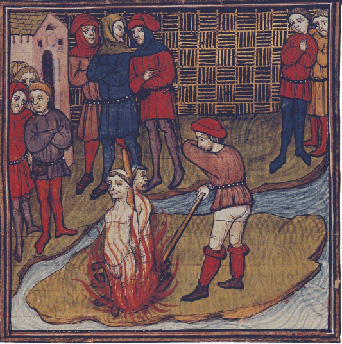
 Turin Shroud could be genuine, scientist has said Radio carbon dating carried out in 1988 was performed on an area of the relic that was repaired in the 16th century, according to Ray Rogers, who helped lead the Shroud of Turin Research Project (STRP).
Turin Shroud could be genuine, scientist has said Radio carbon dating carried out in 1988 was performed on an area of the relic that was repaired in the 16th century, according to Ray Rogers, who helped lead the Shroud of Turin Research Project (STRP).At the time he argued firmly that the shroud, which bears a Christlike image, was a clever forgery. But in a video made shortly before his death three years ago, he said facts had come to light that indicated the shroud could be genuine.
Rogers, a chemist from the Los Alamos National Laboratory in New Mexico, said: "I don't believe in miracles that defy the laws of nature. After the 1988 investigation I'd given up on the shroud."But now I am coming to the conclusion that it has a very good chance of being the piece of cloth that was used to bury the historic Jesus." He came to his conclusion after re-examining a theory from two amateur scientists that he had earlier dismissed as being from "the lunatic fringe".
Sue Benford and Joe Marina, from Ohio, suspected the 1988 sample was from a damaged section of the linen shroud repaired in the 16th century after being damaged in a fire. Rogers said: "I was irritated and determined to prove Sue and Joe wrong."
However, when he came to examine threads taken in 1978 - luckily from the same section as the 1988 sample - he found cotton in them.
He said: "The cotton fibres w
 ere fairly heavily coated with dye, suggesting they were changed to match the linen during a repair.
ere fairly heavily coated with dye, suggesting they were changed to match the linen during a repair."I concluded that area of the shroud was manipulated by someone with great skill.
"Sue and Joe were right. The worst possible sample for carbon dating was taken. "It consisted of different materials than were used in the shroud itself, so the age we produced was inaccurate." In the video, made shortly before he died of cancer in March 2005, he said: "I came very close to proving the shroud was used to bury the historic Jesus."
This latest evidence, to be broadcast in The Turin Shroud: New Evidence at 8pm on Sunday on the Discovery Channel, is the latest chapter in the shroud's history. For the last 21 years most have considered it to be a medieval fake, after the 1988 tests dated it as being made between 1260 and 1390. The result overturned 10 years of hope among Christians that it was real, after the first scientific tests found evidence of blood and serum stains.
The earliest documented sighting of the shroud is from 1353, but last week a historian claimed in the Vatican's newspaper that she had found a "missing link" in the Holy See's Secret Archives proving the Knights Templar had safeguarded it during the 13th century.
_________________________________________________________
Knights Templar worshipped the Turin Shroud
The medieval Knights Templar did venerate an image of a bearded man, as was alleged by their persecutors but his name was Jesus, and the idol was the Turin Shroud.
A Vatican researcher has uncovered evidence that the order, which was brutally suppressed in 1305 by King Philip IV of France and Pope Clement V, guarded and venerated the Shroud.
In an article published by the Vatican daily, L'Osservatore Romano, a historian, Barbara Frale, said she had uncovered "missing clues" to both the mysterious fate of the Templars and the Shroud.

Vatican documents included an account of a Templar initiation rite in 1287 of a young Frenchman, Arnaut Sabbatier.
"(I was) shown a long piece of linen on which was impressed the figure of a man and told to worship it, kissing the feet three times," said the document.
The shroud, a long piece of cloth bearing the image of a man's face and body, is kept in Turin is dated from at least 1357 when it was first displayed by the widow of a French knight.
A similar relic is known to have been worshipped in Byzantium, now Istanbul and to have disappeared from there during the sack of the city by Crusaders, including Knights Templar, in 1204.
The Templar order, whose full name was "Poor Fellow-Soldiers of Christ and of the Temple of Solomon", were founded in 1119 by knights sworn to protecting Christian pilgrims visiting the Holy Land after the Crusaders captured Jerusalem in 1099.
The order amassed enormous wealth and helped finance wars of medieval European monarchs, over 700 years later legends of their hidden treasures, secret rituals and power have fascinated millions and dominated the bestseller lists with books such as "The Da Vinci Code".
Rumours about the secret initiation ceremonies of the Templar order and the allegation of idolatry, specifically the worship of images of bearded men, were crucial in 1307 when hundreds of knights were arrested, tortured into giving false confessions, and then burned at the stake.



